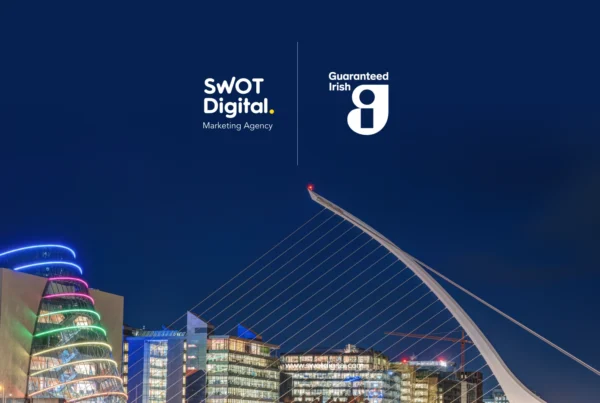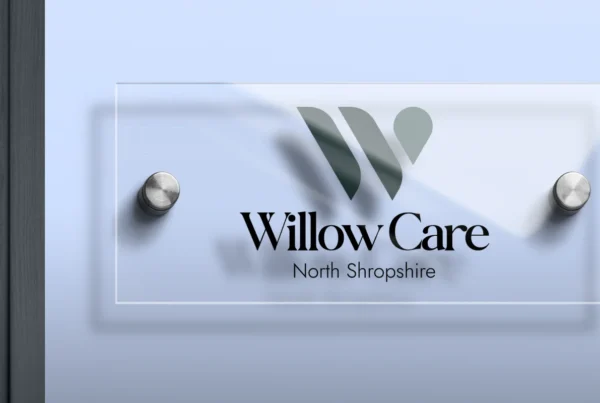According to the Irish Times, 63% of Irish small and medium size enterprises now have an online presence. This is the first step for business acquiring customers online. However, what many small businesses have found, is that creating a website is by no means a guarantee of success online.
So many times, over the last 15 years or so, businesses owners have come to us exasperated that they have got no customers from their website despite spending thousands on getting a website developed and published on the Internet. I’ve lost count of the times I’ve had to explain to people it is not the case, (akin to the Field of the Dreams) that if you build it they will come. I often give the analogy that, instead, it is like building a shop on the moon. It might be the sleekest shop, selling the best brands at the cheapest prices, but if people are not aware of its existence people will never visit your shop and never, ever buy from you.
So what are your options as a small business owner? How do you get people to find out about your website and get them to become your customers? Thankfully there are several options. Some are no-brainers and can give you a jump on your competition. Others require an investment in time and/or money. Below we look at a few of these:
- Build your website to best practise
Your website needs to be functional. It needs to make sense. When a prospective customer arrives on the site the path you want them to take and actions you want them to complete should be obvious.
It needs to be aesthetically pleasing. In other words it must look well. if your website appears cluttered or there are typos in the text or the images are of poor quality it will likely put people off.
- Optimise your website for search engines
An extension of (1), a site needs to be optimised for search engines (Google has over a 90% share in Ireland, so think Google). Many 3rd party sites, such as Moz, can help you achieve this. A number of areas need to be addressed here including page content, page name, URL structure, page titles and descriptions, images, heading tags, internal and external linking.
- Tell your customers, prospects & suppliers
Let your stakeholders know that you’ve got a website. Include your website address on all correspondence (email, letterhead, invoicing etc) and incentivise people to conduct business through your website. For example you could offer a discount if people buy from you through your website.
- Get social with Facebook, Twitter and other social networks
In an ever-increasing social world, social networks must be embraced. According to Alexa Facebook is the 4th most visited site in Ireland and Twitter is the 9th. A presence should be developed on these high traffic channels linking back to your main website.
- Get on the map with Google my business
Have you ever seen the map results come up in Google’s search results? Your business can feature here, simply by signing up and filling in the required information. This is of particular significance if your businesses presence locally is important. For example if you are a coffee shop in Dublin 3, you need to be found when someone does an appropriate search in the mapped listings like this:
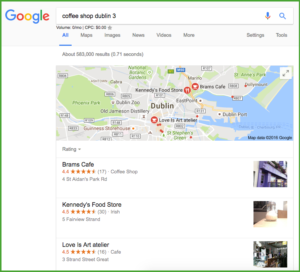
- Advertise with Google AdWords and other online channels
With Google AdWords you can reach people with targeted adverts (text ads, image ads, video ads etc) when they perform a search on Google or are browsing on a site where Google Adverts are shown. This lets you reach a huge audience of relevant people who are online searching for the products/services you supply. Other online advertising opportunities exist through other big channels (like Facebook and Twitter) as well as display advertising on major portal sites (like Donedeal and RTE).
- Search engine optimisation (SEO)
SEO is the process of optimising a website’s presence so it is seen as increasingly authoritative by Google (and other search engines). Although there are several strands to SEO, it largely revolves around link building and creating relevant and useful content, both on and off your website.
- Analyse everything
Carrying out the above actions can have a significant impact on a website’s performance. What is critical is being able to understand what is having a positive (and negative) effect on the website and building upon this success going forward.
Putting it all together
In an ideal world, a small business owner will consider all the options available to them and put together a tailored digital marketing strategy to include a number of the solutions provided above. Some things are quick to implement and if done properly, quick to see results (such as Google AdWords advertising) whereas some can take several months (such as SEO).
Of course a business should want to do more than ‘get new customers online’. The more strategic they can be the better. Consideration should be given to where you want to be in x months or years time online. You need to know what success looks like, define goals and set KPIs so you know you are winning (or not) as you roll-out and implement your strategy.
At SWOT Digital, we work with companies every day, in helping them realise their online success. If you need help in creating and implementing a digital marketing strategy or some assistance with different aspects of digital marketing, please now.




